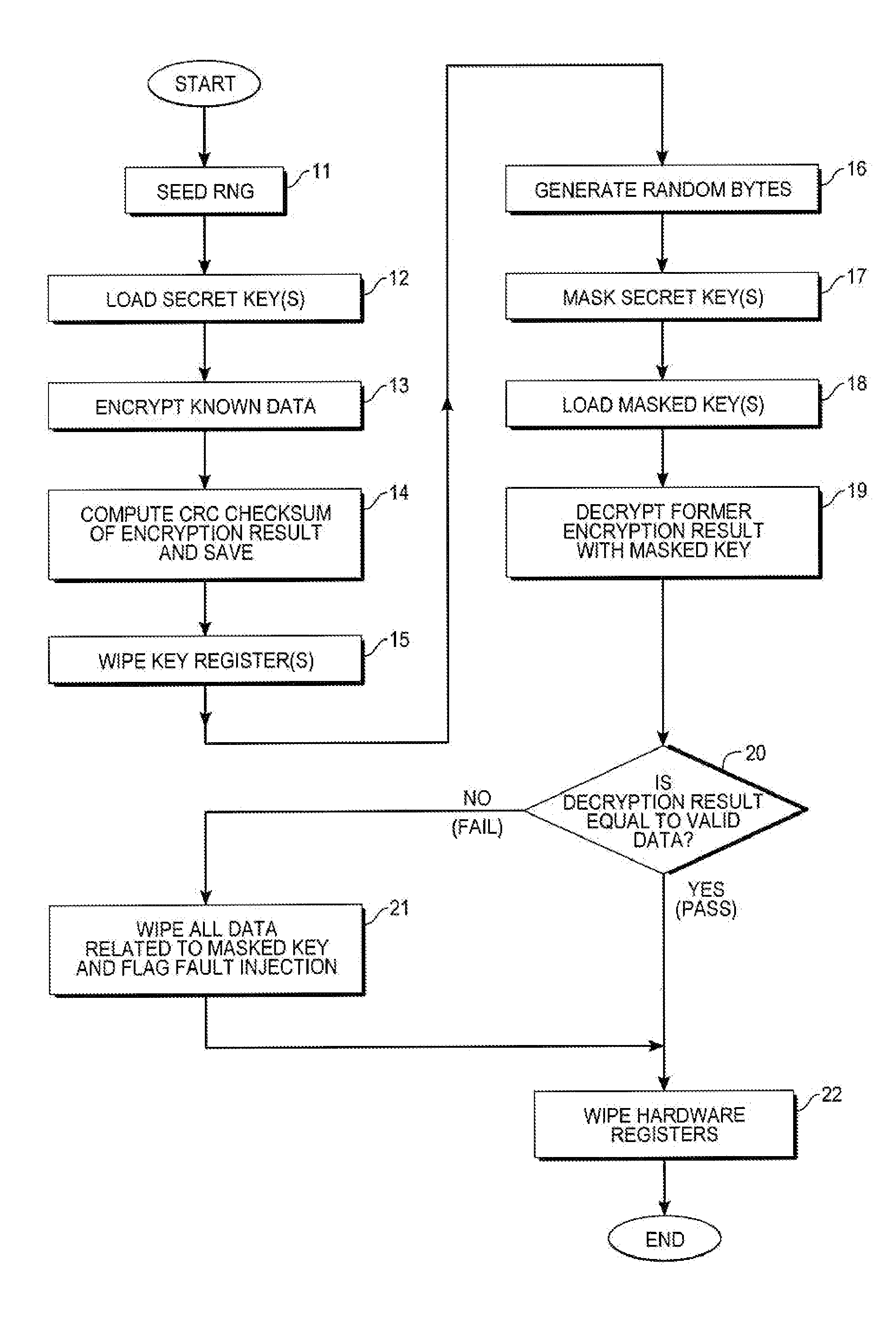Key protection mechanism
a key protection and key technology, applied in the field of cryptographic systems, can solve problems such as computational errors, off-line implementation of available protection mechanisms, and hardware faults of transitive hardwar
- Summary
- Abstract
- Description
- Claims
- Application Information
AI Technical Summary
Problems solved by technology
Method used
Image
Examples
Embodiment Construction
[0009]An exemplary hardware environment, in which the key protection, method of the present invention can operate, may include a hardware random number generator (RNG), a random-access memory (RAM) or non-volatile memory (e.g., a flash EPROM) for secured keys storage, a microprocessor or microcontroller, and some memory to store a program. Additionally, the hardware could potentially include a hardware coprocessor for computing secret-keys based algorithms (DES, AES, etc.). Such a coprocessor, if present, would handle an XOR-based key de-masking mechanism;
[0010]Real_Key:=Masked_Key XOR Masking_Value, and likewise
[0011]Masked_Key:=Real_Key XOR Masking_Value.
[0012]Therefore, it would then no longer be mandatory to manipulate or store a key under its real form, but in its masked form instead. Additionally, the hardware could potentially include a hardware cyclic redundancy check (CRC) module for performing integrity checking. A 16-bit module would be adequate, but other sizes of CRC ar...
PUM
 Login to View More
Login to View More Abstract
Description
Claims
Application Information
 Login to View More
Login to View More - R&D
- Intellectual Property
- Life Sciences
- Materials
- Tech Scout
- Unparalleled Data Quality
- Higher Quality Content
- 60% Fewer Hallucinations
Browse by: Latest US Patents, China's latest patents, Technical Efficacy Thesaurus, Application Domain, Technology Topic, Popular Technical Reports.
© 2025 PatSnap. All rights reserved.Legal|Privacy policy|Modern Slavery Act Transparency Statement|Sitemap|About US| Contact US: help@patsnap.com


